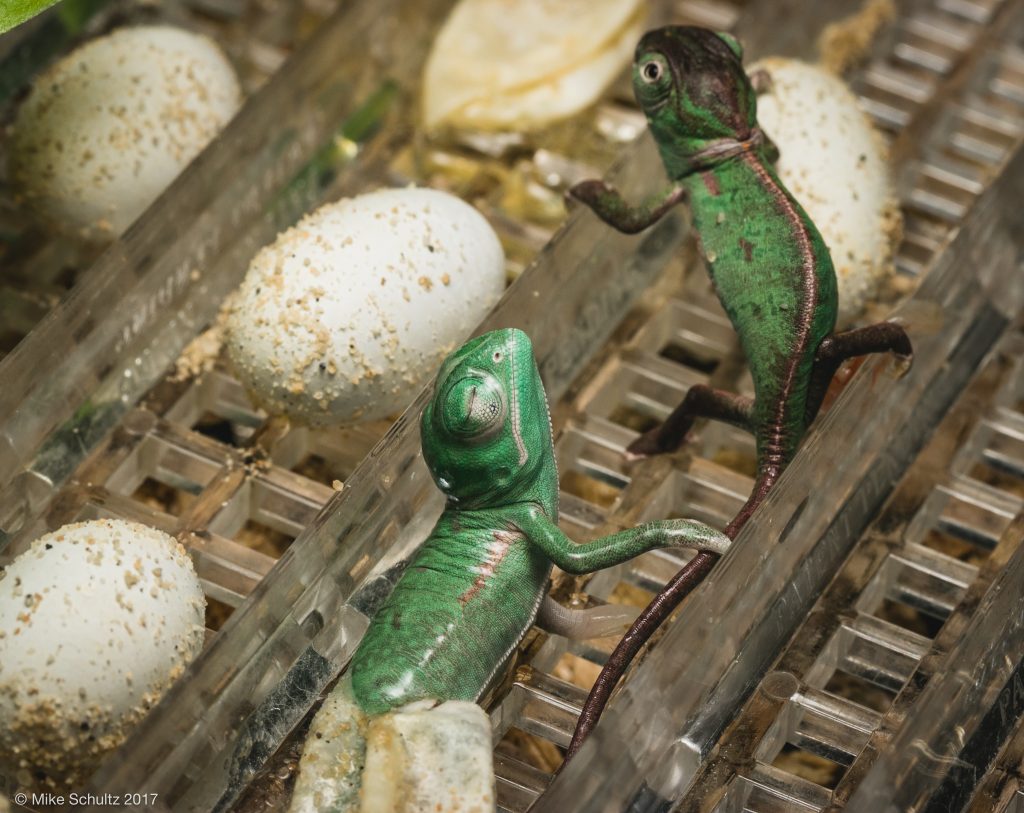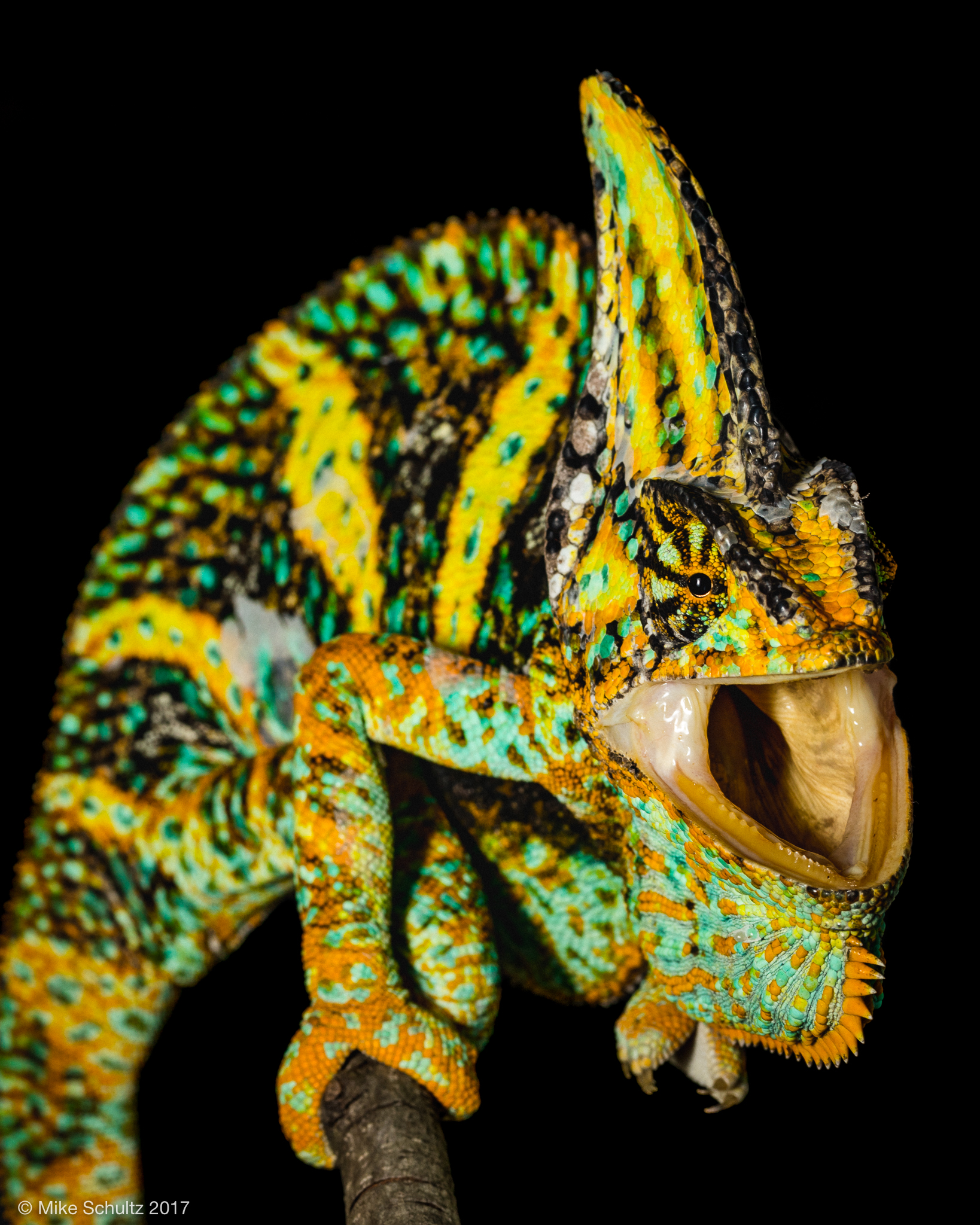If you’re searching for information on Veiled Chameleon care, you’ve come to the right place. These fascinating reptiles require specific conditions to thrive, and in this comprehensive care guide, we’ll provide you with essential information on how to keep your Veiled Chameleon healthy and happy. By following the tips below, you can ensure that your Veiled Chameleon receives the proper care it needs to thrive.
Habitat: Provide a Spacious and Stimulating Environment
Veiled Chameleons need plenty of space to climb, hide, and explore. A screen cage is a popular choice, as it provides good ventilation and allows for easy access for cleaning and feeding. Your Veiled Chameleon enclosure should be at least 2 feet by 2 feet by 4 feet tall, with ample branches, foliage, and climbing opportunities. Avoid using glass enclosures, as they can create a stagnant, humid environment that can lead to respiratory issues.
I like the Zen Habitats 2x2x4 Meridian enclosure, which you can ORDER HERE! It has a screen vent in the bottom as well as the top, allowing for great ariflow while still maintaining solid sides to avoid overspray while watering your chameleon. They are also fantastic looking cages that come with a 3 year warranty!
Lighting: Provide UVB and Basking Lamps
Veiled Chameleons require access to both UVB and basking lamps. These lamps provide the heat and light that your chameleon needs to thrive. UVB lamps simulate natural sunlight, which helps your chameleon synthesize vitamin D3. Basking lamps provide warmth for your chameleon to regulate their body temperature. The recommended temperature range for a Veiled Chameleon is between 75°F to 85°F, with a basking spot of around 90°F to 95°F.
Veiled Chameleon Diet: Offer a Balanced and Varied Nutritious Selection
Veiled Chameleons are insectivores, which means they primarily eat insects. However, they also require a varied diet of fruits and vegetables to stay healthy. Offer them a range of gut-loaded insects, such as crickets, roaches, and mealworms. You can also provide fresh fruits and vegetables, such as collard greens, carrots, and apples. Avoid feeding your chameleon insects caught in the wild, as they may be contaminated with pesticides or other toxins.
Water: Provide Fresh and Clean Water
Veiled Chameleons require regular access to clean, fresh water. However, chameleons typically will NOT drink from a dish or bowl as many other reptiles will. You can provide them with proper hydration by misting the enclosure several times a day or by using a drip system. A drip system can be especially helpful, as it simulates rain and encourages your chameleon to drink. Be sure to change the water frequently and clean any water lines or drippers regularly to prevent the growth of bacteria.
Handling: Approach Your Chameleon with Care
While Veiled Chameleons can be handled, it’s essential to do so with care. They are delicate creatures and can easily become stressed or injured if handled improperly. It’s best to let them come to you and to support their body as they move. Avoid handling them excessively or roughly, and always wash your hands before and after handling to prevent the spread of germs. If your Chameleon shows signs of too much stress when attempting to handle it, it’s best to leave it be.
Health: Keep an Eye on Your Chameleon’s Health
Regularly monitoring your Veiled Chameleon’s health is crucial. Keep an eye out for signs of illness or stress, such as lethargy, loss of appetite, or patchy discolored skin. If you notice any concerning symptoms, take your chameleon to a veterinarian who specializes in exotic pets.
How to Breed Veiled Chameleons:

Breeding Veiled Chameleons is not recommended for beginner chameleon keepers. It is a complex process that requires careful planning and preparation. Here are the basic steps involved:
- Ensure that both the male and female chameleons are healthy and well-fed.
- Provide a large enough enclosure with plenty of foliage and branches for the female to lay her eggs. The temperature and humidity levels in the enclosure should be carefully monitored. The female will need a container full of substrate, like slightly damp peat moss or vermiculite, in which to lay her eggs.
- Introduce the male and female chameleons together in the enclosure for mating. Be sure to supervise them closely during this process to prevent any aggressive behavior.
- After mating, the female will lay a clutch of eggs within a few weeks. The eggs should be carefully removed and placed in a separate incubator with the right temperature and humidity levels to ensure they receive proper care.
- The eggs will hatch after approximately 6-9 months, and the hatchlings will need to be cared for separately in their own enclosures.
Breeding Veiled Chameleons can be a rewarding experience for experienced chameleon keepers, but it should not be undertaken lightly. It is important to thoroughly research the process and be prepared for the responsibility of caring for the hatchlings.
Veiled Chameleon Care Guide: Conclusion
By following the guidelines above, you can provide your Veiled Chameleon with the care they need to thrive. Remember to do your research and consult with a veterinarian if you have any questions or concerns about your pet’s health. With proper care, your chameleon can live a long and healthy life.

